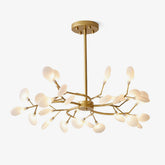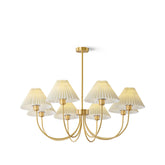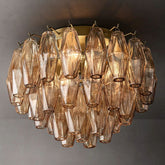Global Plug Guide
A Guide to Plug Types and Sockets by Country
In today's globalized world, understanding different countries' plug types and voltage standards has become increasingly important. Whether you're purchasing international appliances or preparing for a trip abroad, knowing the differences in plugs and voltage can help you avoid unnecessary inconveniences. This article provides a comprehensive guide to the world's main plug types, voltage standards, and how to select the appropriate adapters and converters based on your destination.

Common Plug Types by Region
There are currently 15 standard plug types in use globally, designated by letters (A through O). These types correspond to different pin configurations, grounding methods, and compatibility with electrical sockets. Here’s a breakdown of the most common plug types used in developed countries:
| Plug Type | Regions/Countries | Description |
|---|---|---|
| Type A | USA, Canada, Mexico, Japan | Two flat pins, ungrounded. Used primarily in North America and parts of Asia. Typically 100-127V. |
| Type B | USA, Canada, Mexico | Similar to Type A but includes a grounding pin. Used for devices requiring additional grounding. Typically 100-127V. |
| Type C | Europe, South America, Asia | Two round pins, ungrounded. Known as the Europlug, commonly found across Europe (except UK). Typically 220-240V. |
| Type D | India, South Africa | Three round pins, grounded. Common in India and some African countries. Typically 220-240V. |
| Type E | France, Belgium, Poland, Slovakia | Two round pins, grounded. Primarily used in France and other parts of Europe. Compatible with Type F plugs. 220-240V. |
| Type F | Germany, Spain, Russia, Europe | Two round pins with grounding clips. Common across mainland Europe, excluding the UK and Ireland. Compatible with Type C and E plugs. 220-240V. |
| Type G | UK, Ireland, Malta, Malaysia | Three rectangular pins, grounded. Used primarily in the UK and its former colonies. Voltage range 220-250V. |
| Type I | Australia, New Zealand, China | Two or three pins (depending on grounding), used in Australia, New Zealand, and China. Typically 220-240V. |

Voltage and Frequency Considerations
Voltage is another critical factor to consider when traveling or purchasing electronics internationally. Most countries in North America (such as the U.S. and Canada) use 120V and 60Hz, while many European countries operate on 220-240V and 50Hz. Using a device rated for one voltage in a country with a different voltage can damage the device or cause a safety hazard, so a voltage converter or dual-voltage device is essential in these cases.
Adapting to Different Plug Types
If you are traveling or relocating, it’s advisable to carry a universal travel adapter that allows you to connect your device to different types of sockets. A plug adapter modifies the physical shape of the plug, but it does not convert voltage—so make sure your device can handle the voltage used in the destination country.
Some common travel scenarios include:
- From the US to Europe: You will need a plug adapter from Type A/B to Type C/F, as well as a voltage converter if your device is not dual-voltage.
- From Europe to the UK: You'll need a plug adapter from Type C/F to Type G.
- From Australia to North America: You will need an adapter for Type I to Type A/B, but voltage conversion may also be necessary.
Understanding the plug types and voltage systems used around the world is essential for international travelers and anyone purchasing electronic devices globally. With the right knowledge, you can ensure your devices work safely and efficiently, whether you’re at home or abroad.
For further reference, use a global plug guide to quickly check which adapters or voltage converters are needed for your specific destination or appliance use.
- Choosing a selection results in a full page refresh.









